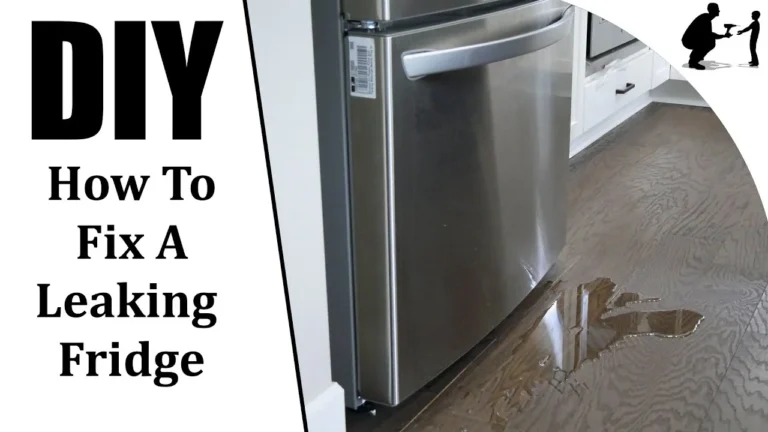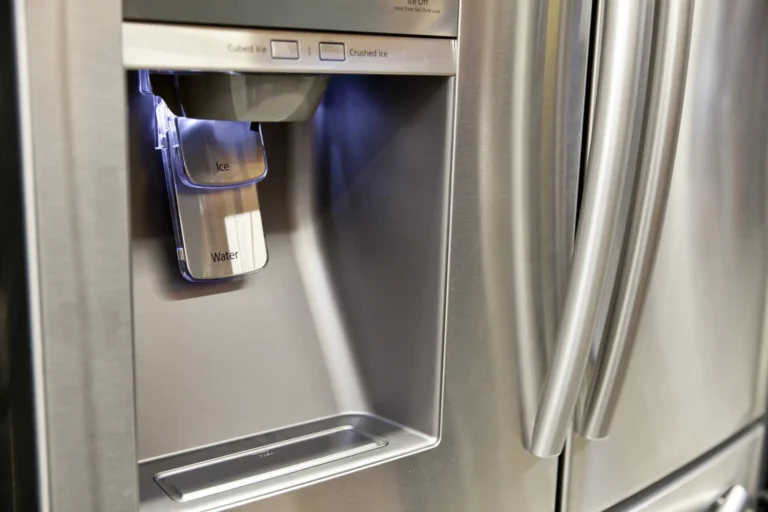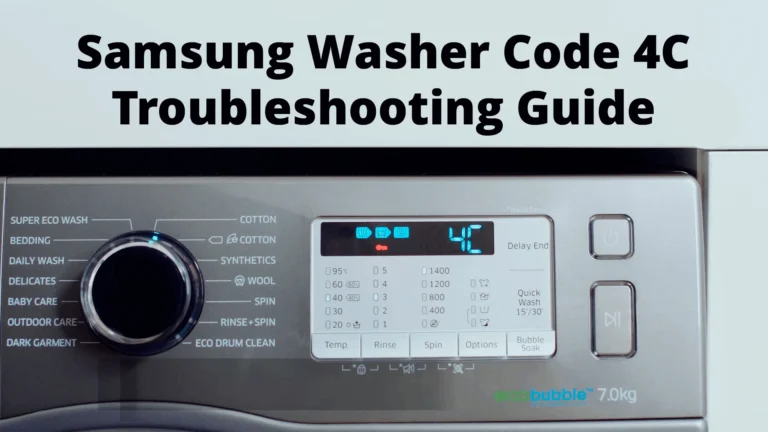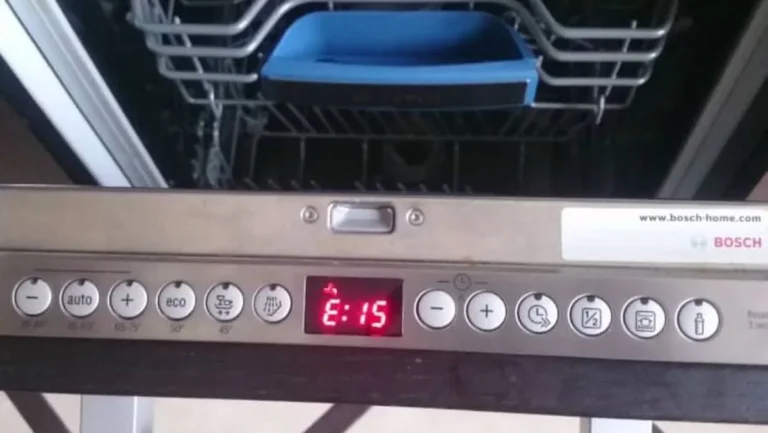Troubleshooting a Dishwasher Not Spraying Water
A dishwasher not spraying water can be a frustrating issue. Your dishes may come out still dirty, which defeats the whole purpose of using a dishwasher. There are several potential causes for a dishwasher failing to spray water during the wash cycle. With some basic troubleshooting, you can likely resolve the problem yourself without the hassle and expense of calling a repair technician.
Check Water Supply and Flow
The first thing to check is whether water is actually flowing into the dishwasher. Start by verifying that the water supply valve located under the sink is turned on. Make sure it is open all the way. Check that the water line is not kinked or obstructed. Examine the water line where it connects to the dishwasher for any leaks. Tighten connections if needed.
Confirm there are no issues with water pressure. Turn on the sink faucet nearest the dishwasher to make sure the water pressure is adequate. There should be a steady stream of water flow. If the water pressure is low, the dishwasher may not be getting sufficient water to operate correctly.
Inspect the Float Switch
Dishwashers have a small float switch that controls the water fill. This little float rises as water fills the dishwasher tub. When it reaches a certain level, the float triggers a switch that shuts off the water flow. If the float gets stuck in the upward position, it will prevent the dishwasher from filling properly.
To check the float, simply start a wash cycle and open the dishwasher briefly while it is filling. Look inside for a small ball-shaped device along the side of the tub. Make sure it is able to move up and down freely. If it appears stuck, try jiggling it loose with a utensil handle. If the float still won’t move, it likely needs to be replaced.
Check Drain Screen and Pump
A clogged drain screen or malfunctioning drain pump can also prevent proper water flow in a dishwasher. The drain pump uses an impeller to force water through the spray arms. If debris gets lodged in the drain screen at the bottom of the tub, it will block water from draining out. The lack of water drainage then backs up the system and interferes with fresh water entering the tub.
To clean out the drain, first remove the lower wash arm. Then twist off the drain screen cap and pull out the screen. Rinse it under warm water to wash away any debris. Make sure the drain impeller is clear by rotating it with your finger. Reinstall the clean screen and test the dishwasher. If it still won’t spray, the pump may need replacing.
Examine the Spray Arms
The upper and lower spray arms distribute water throughout the dishwasher tub. They use high pressure to propel water through the nozzles and onto the dishes. Any blockages or obstructions in the spray arms can hamper water flow and cause spraying issues.
Remove the spray arms and inspect them for clogs. Use a small brush or stiff wire to clear out any bits of food, grease, or hard water scale from the nozzles. Rinse the arms under warm water. Spin them manually to confirm they rotate freely. Reinstall them and verify water flows correctly when starting a wash cycle. If needed, replace defective spray arms.
Check Water Inlet Valve
The water inlet valve controls the flow of water into the dishwasher. If it is clogged or worn out, it can prevent adequate water from entering the tub. The valve uses an electrical solenoid to open the valve when the dishwasher turns on. Faulty wiring or a bad solenoid will cause the valve to malfunction.
Inspect the water inlet valve to make sure it is functioning. Listen closely when the dishwasher first turns on; you should hear a faint buzzing noise as the solenoid activates. If it doesn’t make noise, the solenoid or wiring likely needs repair. If the valve makes noise but no water enters, the valve could be clogged with mineral deposits. Try cleaning it with vinegar. If that doesn’t work, replace the entire water inlet valve.
Test Heating Element and Thermistor
Dishwashers rely on the heating element and thermistor to regulate water temperature during cycles. The thermistor monitors the temperature and signals the heating element when to turn on and off. If either component fails, the dishwasher may not properly fill or spray water.
Use a multimeter to test the heating element for continuity. If the reading is outside the normal range, replace the heating element. To check the thermistor, test it with an ohmmeter. Compare the readings to manufacturer specifications. If the thermistor is faulty, replace it.
Assess Motor and Circulation Pump
The motor drives the circulation pump to pressurize water through the spray arms. A defective motor or pump impeller could impair water flow. Listen closely when the dishwasher runs. If the motor hums but doesn’t start, it likely needs replacing.
To check the pump, remove the lower spray arm and drain the tub. Examine the pump impeller inside to make sure it spins freely. Look for cracks or obstructions. Clean it out if needed. Replace defective parts. Also inspect the dishwasher motor and wiring.
Test Door Switch and Control Board
The inner door switch activates when the door closes and allows a cycle to proceed. A faulty door switch will prevent the spray arms from operating properly, even if the tub has water. Use a continuity tester on the door switch wires to assess the switch. Replace it if the switch doesn’t close properly when the door shuts.
The control board regulates the dishwasher’s wash programs and cycle functions. If it malfunctions, it can stop the spray arms from working correctly. Unfortunately, control boards can be difficult to diagnose. Try rebooting the dishwasher or resetting the control board. If that doesn’t resolve the spraying issue, you may need to replace the control board.
Examine Water Jets and Wash Arms
Some dishwashers utilize separate jets and wash arms to direct water around the tub. The jets shoot pressurized streams of water to dislodge stuck-on food. Check the jets and confirm nothing is obstructing the openings. Use a straightened paperclip to clear out any blockages in the jets or wash arms.
Adjust Low Water Pressure Switch
Newer dishwashers have a low water pressure switch designed to delay the cycle when water pressure is too low. However, an oversensitive switch may be triggered even when water pressure is adequate. If the other components check out okay, adjust the pressure switch to a less sensitive setting.
Clean or Replace Water Filter
Many dishwashers have a mesh filter to remove food particles and debris from the water supply. Over time, this filter can become clogged and reduce water flow. Check the owner’s manual to locate and clean the filter. If it is damaged, replace it with a new part to restore normal water pressure.
Fix Bad Door Gasket Seal
A leaking door gasket can allow water to escape from the tub during the wash cycle. This will reduce the amount of water available to spray the dishes properly. Inspect the rubber door seal for any cracks or deterioration. Also make sure it sits flat when the door closes. Adjust or replace the gasket if needed to restore a tight seal.
Balance Spray Arm Water Flow
Some dishwashers allow adjusting the water flow balance between the upper and lower spray arms. If one arm has weaker flow than the other, dishes may not get fully cleaned. Turn the water flow adjustment screw to balance the pressure to both arms.
Increase Water Fill Time
If the dishwasher isn’t filling with enough water, it may not have enough to properly spray dishes. Adjust the water fill time by turning the fill time screw to increase the duration. Allow more time for the tub to fill to the needed water level before starting the wash cycle.
Clean Water Distribution Tube
The water distribution tube channels incoming water from the fill valve to the spray arms. Lime and sediment deposits inside the tube can constrict water flow. To clean it, detach the tube from the water valve and spray arms. Use a small wire brush to remove any built-up scale inside the tube.
Unclog Dishwasher Inlet Screen
The inlet screen filters debris as water enters the dishwasher. Mineral deposits and tiny food particles can gradually clog the screen mesh over time. Locate the inlet screen housing near the water inlet valve or spray arm. Remove and clean the screen thoroughly to restore full water flow.
Adjust Water Temperature
Proper water temperature is needed for effective dishwashing. If the water is not hot enough, it impairs cleaning performance. Adjust the heating element or thermostat to achieve the recommended wash and rinse temperatures for maximum cleaning power.
Use Rinse Aid
Rinse aid improves water flow and sheeting action. The surfactants in rinse aid lower the surface tension of water so it can spread and slide off dishes more efficiently. Dispenser cups evenly distribute rinse aid to maximize these benefits during the final rinse cycle.
Don’t Overload the Dishwasher
Loading too many dishes into the dishwasher restricts water circulation. This hampers the spray arms and prevents them from spinning properly. It also decreases cleaning performance. Load dishes correctly with adequate space around each item for best results.
Upgrade Low Water Pressure
Some homes simply lack the high water pressure needed for a dishwasher to function optimally. You may need a booster pump installed to increase household water pressure. This will provide the higher psi your dishwasher requires to drive water through the spray arms.
Check Voltage to Dishwasher
Low voltage due to undersized wiring can cause spray arm issues. Have an electrician check the voltage at the dishwasher electrical junction when running. It should be at least 110 volts. Upgrading to a heavier gauge wire may be needed for proper voltage.
Replace Old Water Supply Hoses
Stiff or leaking supply hoses restrict water flow to the dishwasher. Replace braided vinyl supply hoses older than 5 years with new dishwasher safe hoses. Choose high flow models designed to withstand high pressure and heat. updating hoses improves flow.
descaler to Remove Mineral Deposits
Hard water deposits can slowly clog valves, jets, spray arms and other key dishwasher components. Regularly run a dishwasher descaler through empty wash cycles to dissolve mineral scale and enhance water circulation. Citric acid or white vinegar also work as homemade descalers.
Adjust Detergent Use for Water Hardness
Excessive amounts of dishwasher detergent in hard water results in incomplete rinsing, detergent buildup and restricted water flow. Use less detergent if you have hard water, and run an extra rinse cycle to keep spray arms free of sticky residue.
Let Heating Element Warm Up Completely
If you interrupt the dishwasher too soon after starting it, the heating element may not reach full temperature. Wait until the heating element warms up completely before stopping the dishwasher to prevent flow issues from intermittent heating.
Replace Old Door Seals
Worn or dried-out door seals allow water to leak out during washing. The lack of water volume and pressure in the tub will prevent proper spraying. Replace damaged or hard door seals with fresh gaskets to maintain a water tight seal.
Remove Obstructions Under Filters
Check under the filters at the bottom of the tub for any debris that could impede water circulation through the pump. Rinse away any food particles or foreign objects under the filters. Keep this area debris-free for optimal water pumping.
Flush Water Lines and Valves
Mineral deposits and sediments that accumulate in household water lines can break free and end up clogging dishwasher components. Flush supply lines and valves occasionally to remove any debris and improve water flow to the dishwasher.
Adjust Water Softener Settings
Water softeners are beneficial for removing mineral scale but can make detergent less effective if water is too soft. Adjust softener settings to maintain about 3-4 grains of hardness for compatibility with dishwasher detergent formulas.
Use Correct Detergent Amount
Both too much and too little detergent can hinder proper spray arm function. Make sure to use the amount recommended by the detergent manufacturer and no more than needed for your home’s water hardness. This prevents poor rinsing and clogging.
Clean or Replace Hard Food Disposer
Some dishwashers have a built-in disposer to grind up food particles. If this gets jammed with pieces of bones, fruit pits or other hard items it can block the pump inlet. Remove and clean the hard food disposer unit if clogged.
Don’t Use Foam-Producing Detergent
Thick foam created by some detergent formulas can interfere with spray arm rotation and water circulation. Check the detergent ingredients and avoid brands that contain sodium lauryl sulfate or similar sudsing additives. Use low-sudsing detergent.
Adjust Water Valve Flow Limit
Some dishwasher valves have an adjustable flow limit setting that can be turned down if needed to prevent water waste. However, an overly-restricted setting reduces pressure through the spray arms. Adjust the limiter to the highest flow rate needed.
Use Finish Rinse Aid Cleaner
Finish Rinse Aid Cleaner is a special product developed to dissolve built-up deposits that can clog dishwasher sprayers and water jets. Run this cleaner monthly to maximize rinsing performance and water circulation.
Install Water Pressure Gauge
Determining the baseline water pressure to your dishwasher is the first step in diagnosing spray arm issues. Install an inline water pressure gauge to monitor the actual psi. Compare to manufacturer specs for proper dishwasher operation.
Replace Old or Worn Wash Arms
The small holes and nozzles on the spinning wash arms eventually degrade with prolonged use. Check the spray pattern of the arms. If the pressure or coverage is uneven, worn wash arms could be the culprit. New wash arms restore peak cleaning action.
Avoid Overloading Silverware Basket
Loading too much silverware into the basket can impede water flow. Make sure cutlery items are not crammed too tightly together. Also avoid utensils or knives that stick up and block the spray arm rotation above the basket.
Check Drain Hose Height
If the drain hose loop is positioned too low, dirty water can backflow into the dishwasher. Make sure the hose is routed properly and the high point of the loop is at least 20” above the tub bottom to avoid flow interruptions.
Clean Mineral Scale from Heating Element
Hard water deposits on the heating element insulate it and reduce heating performance. Remove white or yellow mineral scale from the element with white vinegar or dishwasher descaler as part of periodic maintenance.
Replace Defective Wash Motor
The wash motor drives the spray arms. A worn or damaged motor with decreased power can result in low water pressure through the arms. Check the motor if spray arms seem very weak. Replace defective motors to restore full spinning force.
Adjust Water Fill Switch
If the water fill pressure switch isn’t calibrated correctly, it may shut off the fill valve too soon and prevent adequate water volume in the tub. Adjust the switch to allow proper fill level before stopping water flow.
Check Electronic Controller
The electronic controller monitors and regulates all dishwasher functions. A malfunctioning controller can fail to activate the water inlet fill valve or heating element. Try rebooting the controller board before replacing it to restore normal operation.
Remove Obstructions Under Lower Cover
Bits of broken glass or plastic can sometimes get lodged under the lower dishwasher cover and interfere with water circulation. Remove the lower cover and rinse out any debris from this area and the sump screen.
Upgrade Home Water Pressure
Some homes may simply lack the required 20-120 PSI water pressure needed for the dishwasher to function properly. Installing a building water pressure booster pump can increase pressure for improved spray arm performance.
Make Sure Detergent Dispenser Opens
The detergent dispenser should open automatically to release detergent during the wash cycle. If the latch or release mechanism is obstructed, the detergent may not properly dissolve. Repair any dispenser issues to ensure detergent solubility.
Avoid Over-Sudsing Detergent
Liquid dish detergents that create thick foam and suds can clog components and coat spray arms. Check that your detergent doesn’t contain high levels of surfactants that contribute to sudsing. Use a low-foaming powder detergent.
Don’t Use Off-Brand Detergent
Bargain detergents may seem like an economical option, but cheap formulas often don’t rinse away completely. Sticky residue left behind can clog spray arms and impede water flow. Stick with name-brand detergents designed for dishwashers.
Remove Spray Arm Hub Caps
Some spray arm hubs have decorative plastic caps covering the screws. These caps can clog with hard water scale and prevent the arms from spinning freely. Remove the hub caps and clean away any mineral deposits.
Check Drain Line Height
If the corrugated drain line isn’t positioned properly, dirty water can backflow into the dishwasher. Make sure the line is affixed underneath the countertop at the recommend height to prevent interference with water circulation.
Use Rinse Aid with Sheeting Additives
Rinse aids containing sheeting polymers help water drain off dishes and rinse away detergent residue. Look for rinse aids specifically formulated to enhance water sheeting for optimal wash and rinse performance.
Flush Debris from Water Line
Sediments that accumulate in the home’s water line can dislodge and clog internal dishwasher parts. Disconnect the water line several times a year and run it into a bucket to flush out any debris inside the line.
Adjust Fill Level Float Cup
The fill cup holds the float switch that shuts off the water when the tub is full. If the cup is improperly adjusted, it will cut off water flow prematurely and prevent adequate fill volume. Re-position the float cup to the correct height.
Inspect Wash Impeller
The wash impeller works in conjunction with the pump to circulate and spray water through the arms. Remove the pump to check the impeller for cracks or ob
A dishwasher failing to spray water during wash cycles is a common problem with several potential fixes. The key is to methodically troubleshoot each possible cause, starting with the simplest solutions first. Check for clogged or jammed components like spray arms, valves, floats and filters. Assess dishwasher parts like the pump, motor, heating element and control board. Adjust water supply and pressure if needed. With some diligent diagnostics and minor repairs, you can often get your dishwasher spraying properly again without an expensive service call. Be sure to consult the manufacturer’s instructions for your particular dishwasher model as well. With the right knowledge and troubleshooting process, you can likely resolve a dishwasher not spraying water on your own.







